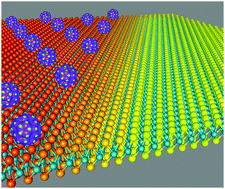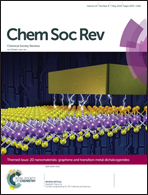The organic–2D transition metal dichalcogenide heterointerface
Abstract
Since the first isolation of graphene, new classes of two-dimensional (2D) materials have offered fascinating platforms for fundamental science and technology explorations at the nanometer scale. In particular, 2D transition metal dichalcogenides (TMD) such as MoS2 and WSe2 have been intensely investigated due to their unique electronic and optical properties, including tunable optical bandgaps, direct–indirect bandgap crossover, strong spin–orbit coupling, etc., for next-generation flexible nanoelectronics and nanophotonics applications. On the other hand, organics have always been excellent materials for flexible electronics. A plethora of organic molecules, including donors, acceptors, and photosensitive molecules, can be synthesized using low cost and scalable procedures. Marrying the fields of organics and 2D TMDs will bring benefits that are not present in either material alone, enabling even better, multifunctional flexible devices. Central to the realization of such devices is a fundamental understanding of the organic–2D TMD interface. Here, we review the organic–2D TMD interface from both chemical and physical perspectives. We discuss the current understanding of the interfacial interactions between the organic layers and the TMDs, as well as the energy level alignment at the interface, focusing in particular on surface charge transfer and electronic screening effects. Applications from the literature are discussed, especially in optoelectronics and p–n hetero- and homo-junctions. We conclude with an outlook on future scientific and device developments based on organic–2D TMD heterointerfaces.

- This article is part of the themed collection: 2D nanomaterials: graphene and transition metal dichalcogenides


 Please wait while we load your content...
Please wait while we load your content...